MULTIPLE MAG ANOMALIES MATCH HISTORIC HIGH GRADE GOLD MINES AT THE RAND PROJECT
-
High-Resolution Aeromagnetic survey completed over the entire 580km2 area encompassing Krakatoa’s Rand Project located in the Central Lachlan Fold Belt, NSW
-
The survey data outlined a strong structural corridor featuring known gold mineralisation at Bulgandry and has generated several high priority target zones in the immediate prospect area and in the surrounding region, including:
-
an 8km length of previously unrecognised NE-trending magnetic lineaments, associated with the prospective gold locations at Bulgandry;
-
a cluster of magnetic anomalies northwest of the Bulgundry historical workings (which includes several mines that produced gold at very high grades, up to 265g/t gold);
-
the possible alignment of palaeochannels (“deep leads”) with mineralisation controlling basement structures; and
-
a 40km structural corridor that transects mineralised Silurian and Devonian granite and Ordovician sediments, mostly obscured by colluvium and underexplored.
-
-
All the identified anomalies have not been drilled or had limited inadequate drilling.
Krakatoa has now complete the high-resolution aeromagnetic survey over the Rand Project (“Project”). The Rand Project covers a combined area of 580km2 and is located approximately 60km NNW of Albury in southern NSW.
The Company announced in early October its intention to collect high-resolution aeromagnetic data to promote the greenfields exploration effort at Rand, particularly in the areas of alluvial cover. Thomson Aviation flew almost 13,000 line-km at a line spacing of 50m and a sensor height averaging 40m. A full analysis and interpretation of the data is now underway.
Krakatoa’s Chief Executive Officer, Mark Major commented;
“We are very encouraged by the preliminary results of the aeromagnetic survey. Thomson provided exceptionally high quality and detailed data that exceeded the Company’s expectation.
We know the area is prospective for orogenic and intrusion-related gold systems, among other deposit styles; and now this survey has identified quality targets not previously recognised as well as reinforced the prospectivity behind the known historical working. These initial priority targets directly provide a pathway forward that could create significant value for Krakatoa shareholders.
We now need to continue with systematic exploration of these targets and are confident that the survey will be effective in revealing gold positions concealed beneath barren cover in the region.”


